"School zone" or not?
|
|
Publication n°. 1
Tuesday, 21st January 2025

|
|
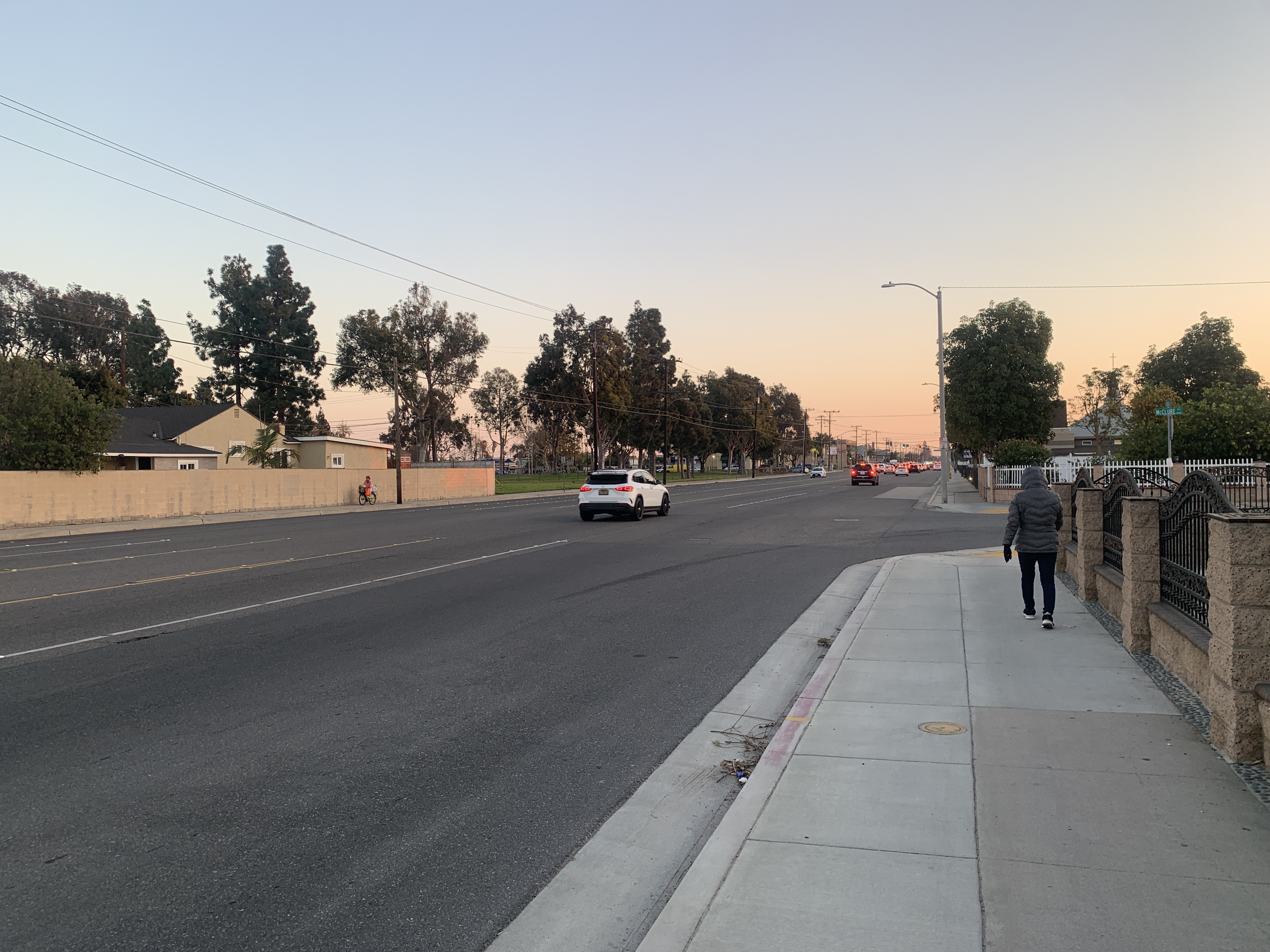
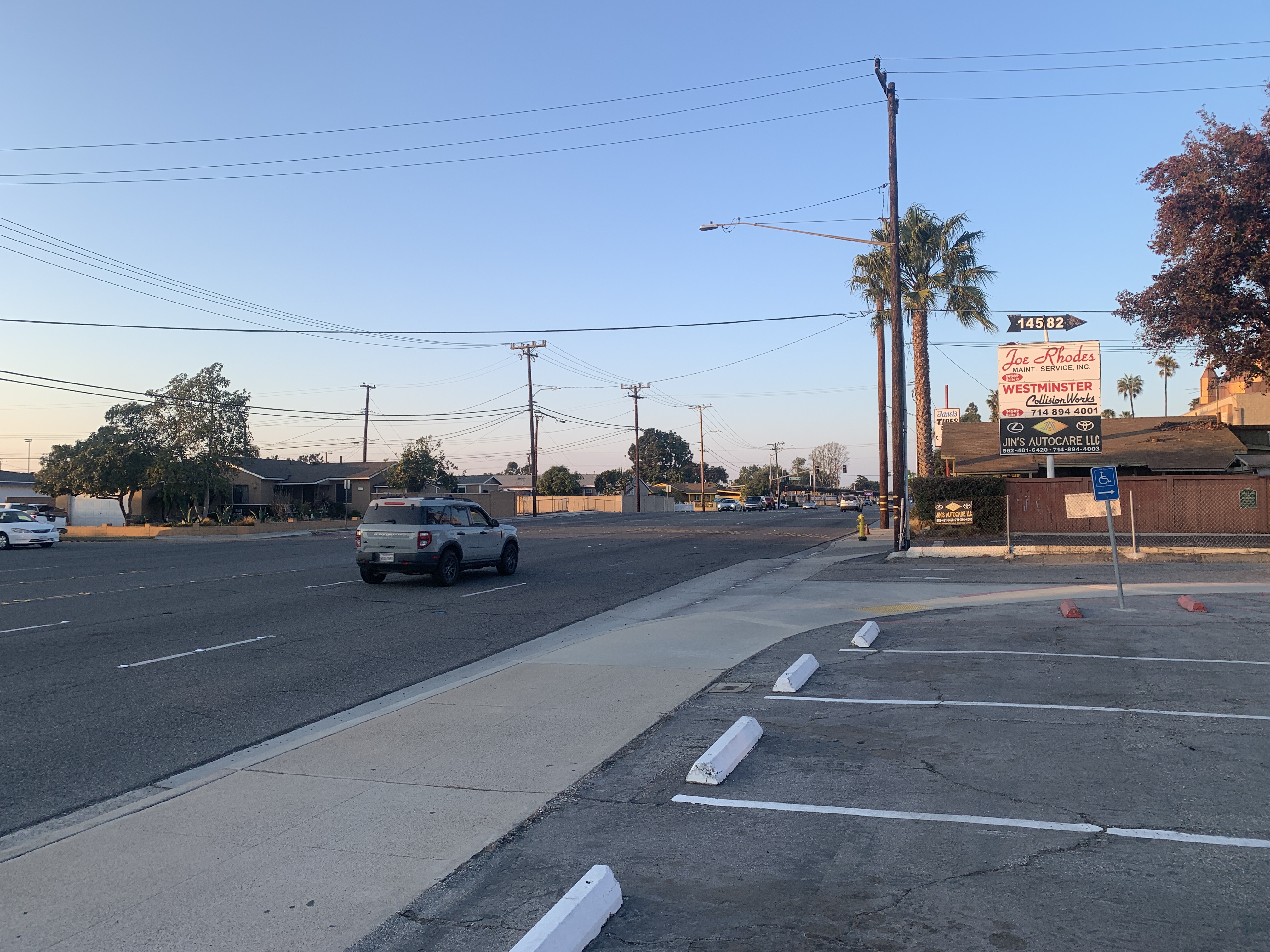
|
|
Observe the two photographed settings; which is of a “school zone”? Most likely, you wouldn’t be able to tell because both of these settings look very similar. Both streets—arterial streets—are six lanes wide plus a median turn lane. There is minimal sidewalk and no bicycle infrastructure. Cars dominate the scenery and there is a lack of greenery. The environments are boring and greyscale; there’s nothing to look at or do.
|
|
The bottom line is that school zones are ineffective at fulfilling their purpose, to enhance student safety on the street. It’s a waste of taxpayer money and resources for a local government to implement a school zone. The intentions are good—perhaps the implementation is obligatory by the State—but the effects are negligible, hardly noticeable.
|
|
In Westminster, the changes made by a school zone include only higher speeding fines, reduced speed limits, and yellow-painted crosswalks. That’s it. The best way to improve student safety on the street is to slow vehicle speeds, yet traffic calming devices are not put to use in any of Westminster’s school zones, unless you consider a cross pan as one. Here’s a fun fact: cross pans are not traffic calming devices. There’s one on Edwards Street near Garden Grove Boulevard; driving over it doing 55 miles per hour (90 kilometres per hour) is perfectly achievable in a vehicle with enough ground clearance. By the way, the speed limit there is 35 mph (55 kph).
|
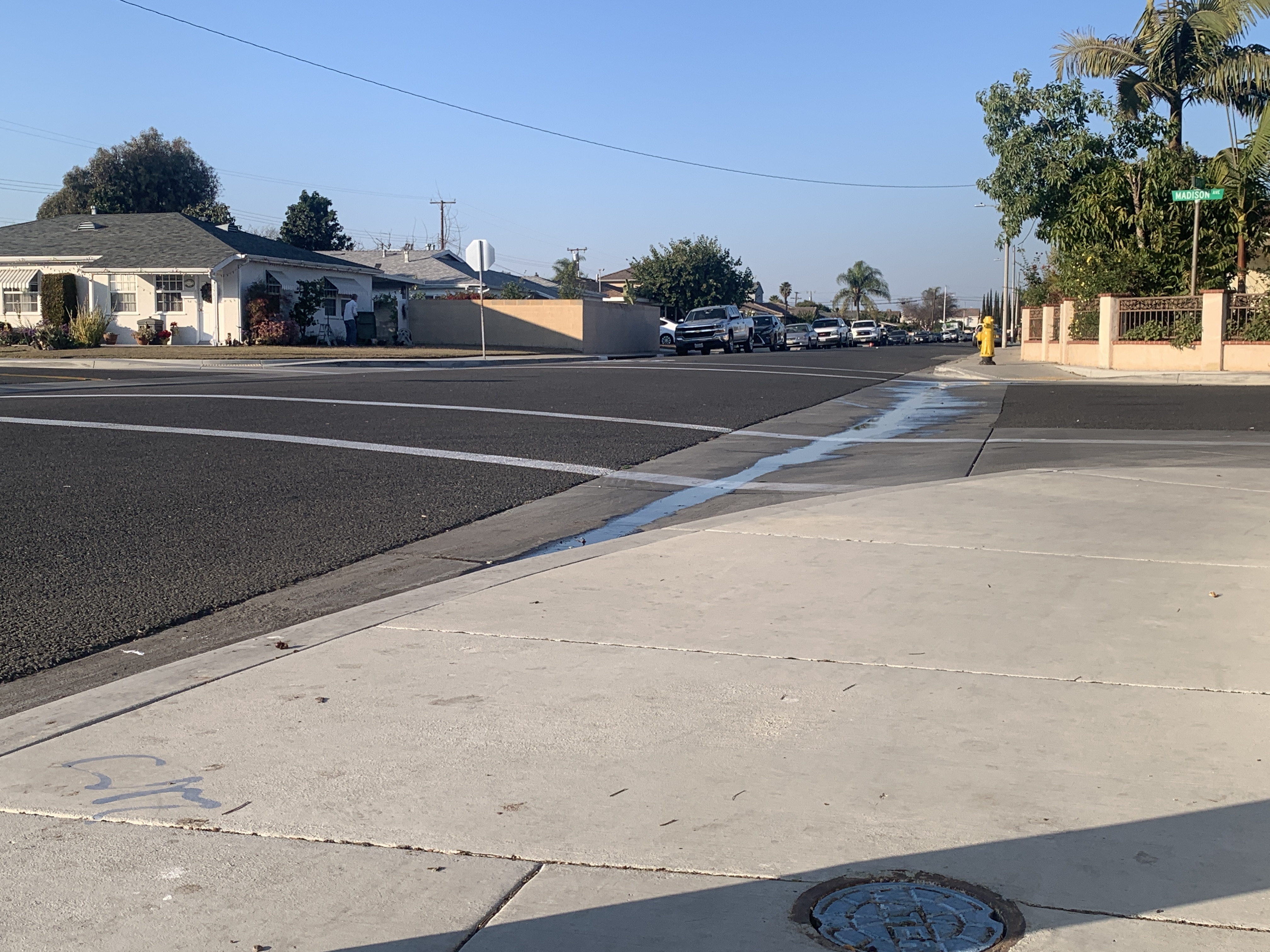
n°. 1: Water in a cross pan where Riata Street intersects Madison Avenue (Midway City, California)
|
|
Speed limit signs are not considered traffic calming devices, or maybe they’re just not as effective as other options. Think about it this way: decent drivers wouldn’t do only 25 mph on a straight and clear section of a six-lane arterial street because its six-freaking-lanes wide, despite there being a sign telling them to limit their speed to 25 mph (…when children are present, but just go with it for the sake of the argument). This phenomenon, the perceived speed limit, is basic driving psychology. Drivers will accelerate to the point they feel is safe depending on the surrounding conditions. And when the conditions are physically unobstructed and forgiving, there is no reason to be limiting the driving speed.
|
|
As for speeding fines, there is no certainty as to whether the police department actually jacks up the penalty. But with respect to its effectiveness, think about it… Have speeding fines ever discouraged extreme speeding on the freeway? Absolutely not! The passing lanes end up being a drag strip. And there is a message to those doing the highway speed limit in the drag strip: I don’t like you.
|
|
Also, why do certain motorists pay for the toll lanes if they’re just going to do the highway speed limit anyway? That defeats the entire purpose of the toll lanes. Well actually, the sole purpose of the toll is to pay off construction debt, but it ends up being advertised as a way to beat traffic and save travel time. And it’s pretty effective at being the solution to the problem it’s caused.
|
|
Data table can be seen on the downloaded version.
|
|
Okay, so school zones don’t improve driver behaviour. Surely those yellow-painted crosswalks would have done something! Despite this, an abundance of students who attend Westminster High School choose to walk or bike to their home or to a business nearby because they have no other choice. Wave after wave, after the fifth, sixth, and seventh periods, crowds of students pack the sidewalks and crosswalks. It’s so packed that the students biking to their destination have to weave around friend groups walking ever so atrociously slow. Some just choose to go on the road itself (which has no bicycle infrastructure) and even dare ride against traffic, which doesn’t slow down as studied.
|
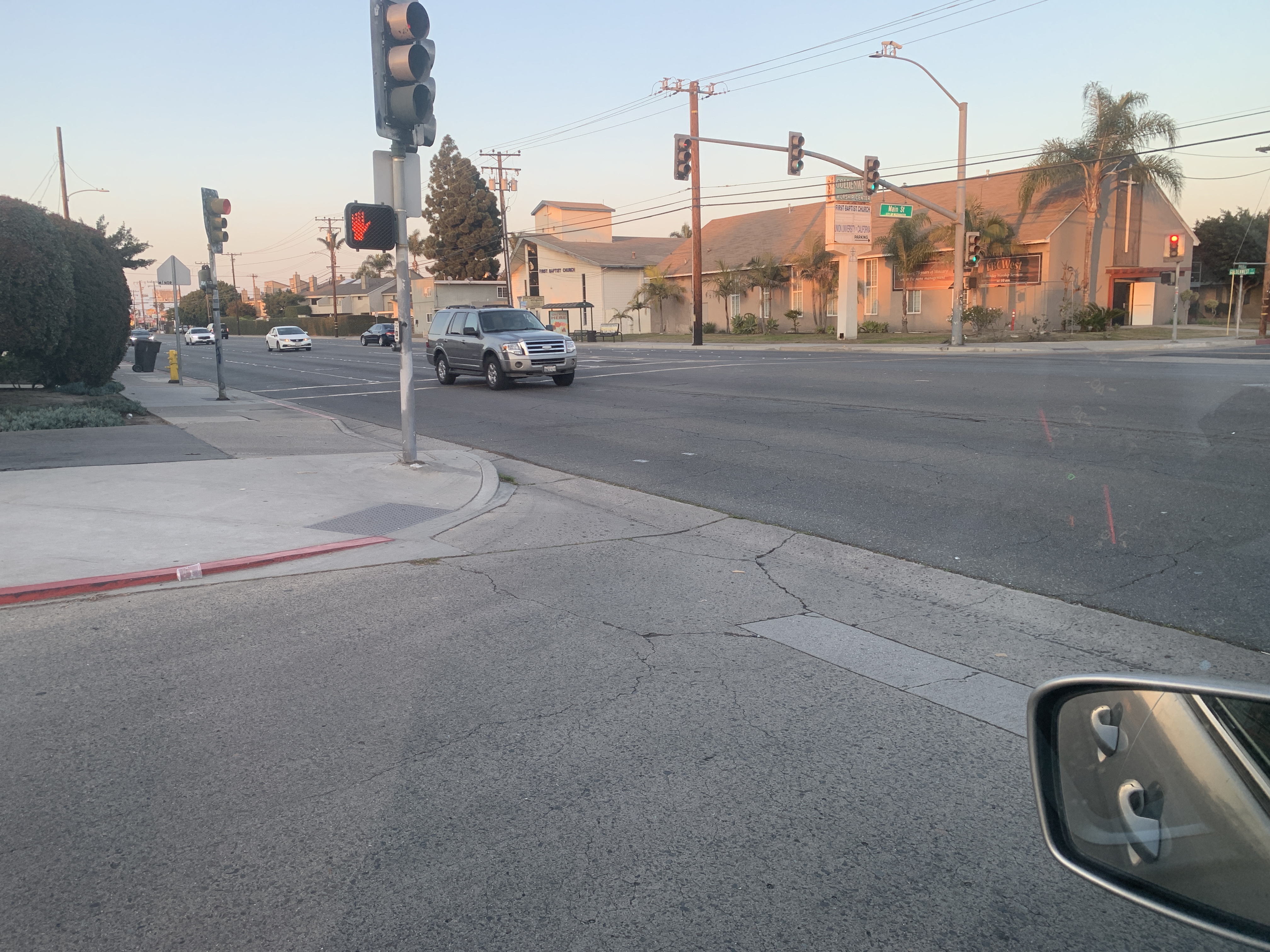
n°. 2: Unmarked crosswalk within a school zone (Westminster High School, Westminster, California)
|
|
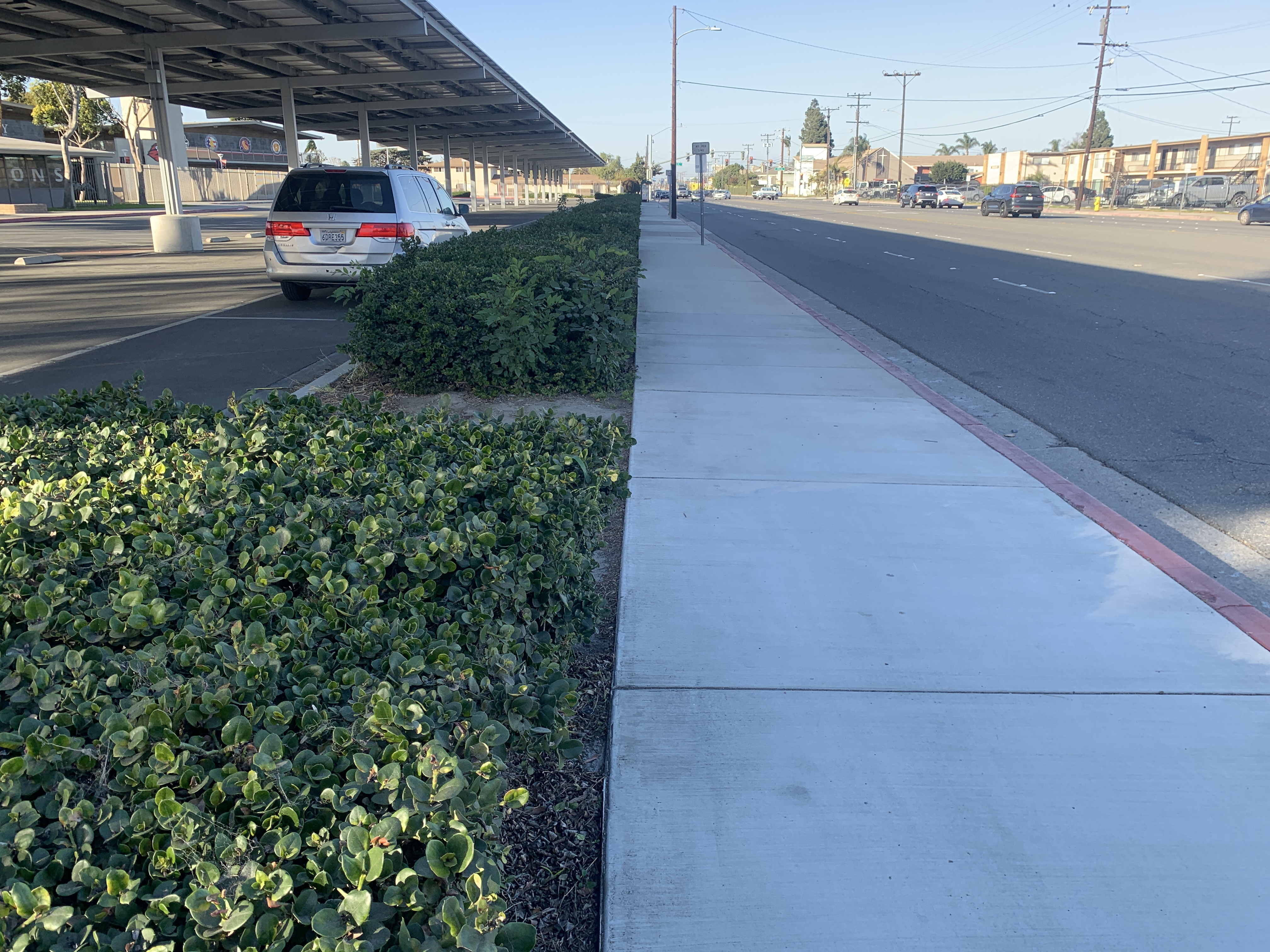
n°. 3: Sidewalk with no separation in front of Westminster High School on Goldenwest Street (Westminster, California)
|
|
The minimum sidewalk width as stated by the Federal Highway Administration varies, depending on the type of sidewalk. If it’s set back from the kerb, meaning there is a barrier (e.g. trees, bushes, guard rails), then the sidewalk must be at least 60 inches (1,5 metres) wide. For reasons unknown to the history of humans, most if not all of Westminster’s sidewalks are set at the kerb face and the minimum width is 72 in. (1,8 m). Westminster’s sidewalks do meet these requirements for the most part, exceeding these minimums by 18 inches. Goldenwest Street’s sidewalk that runs along the front face of Westminster High School is exactly 90 in. (2,3 m) wide, which is great! But it’s not great because it doesn’t meet the minimum width for school zones, which is 96 inches. 96 inches is 48 inches less than the desirable sidewalk width for a school zone. Desirable sidewalk width is the width of a sidewalk that will allow for large volumes of pedestrians to comfortably use the path.
|
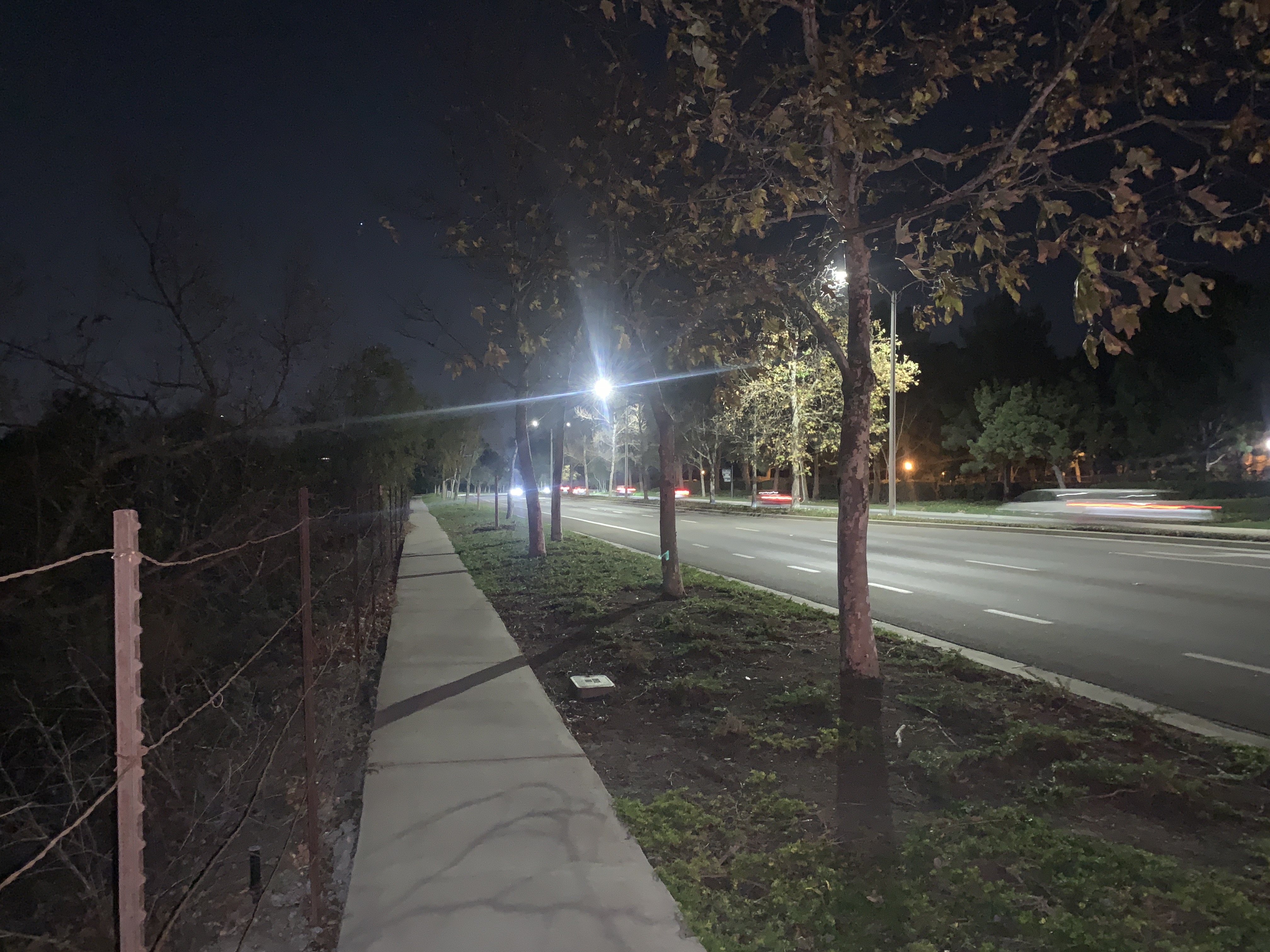
n°. 4: Sidewalk with separation (Barranca Parkway, Irvine, California)
|
|
On top of the undesirably narrow sidewalks, there isn’t really any offered protection for the students who are crammed within it. And this applies to many of Westminster’s sidewalks. Just concrete, then asphalt for speeding traffic. What if an incompetently small-minded student decides to shove their friend for fun, and that friend ends up falling on the road? Keep in mind, traffic isn’t doing the speed limit. Furthermore, it’s not the best feeling or sensation when traffic whizzes by. Not only is it unsafe, but it’s very perilous. The separation reduces the peril, and it’s also a place for obstructions like unnecessary “NO STOPPING ANY TIME” signs and wooden utility poles, both of which the City of Westminster seems to love. Sidewalk separation can provide an environment for trees that can protect pedestrians and beautify the city. As a matter of fact, there is opportunity for sidewalk separation at some sidewalks in Westminster—just without the trees—and yet it isn’t taken advantage of. At Westminster High School on Goldenwest Street from Hazard to Main, all that needs to be done is to just swap the sidewalk and grass.
|
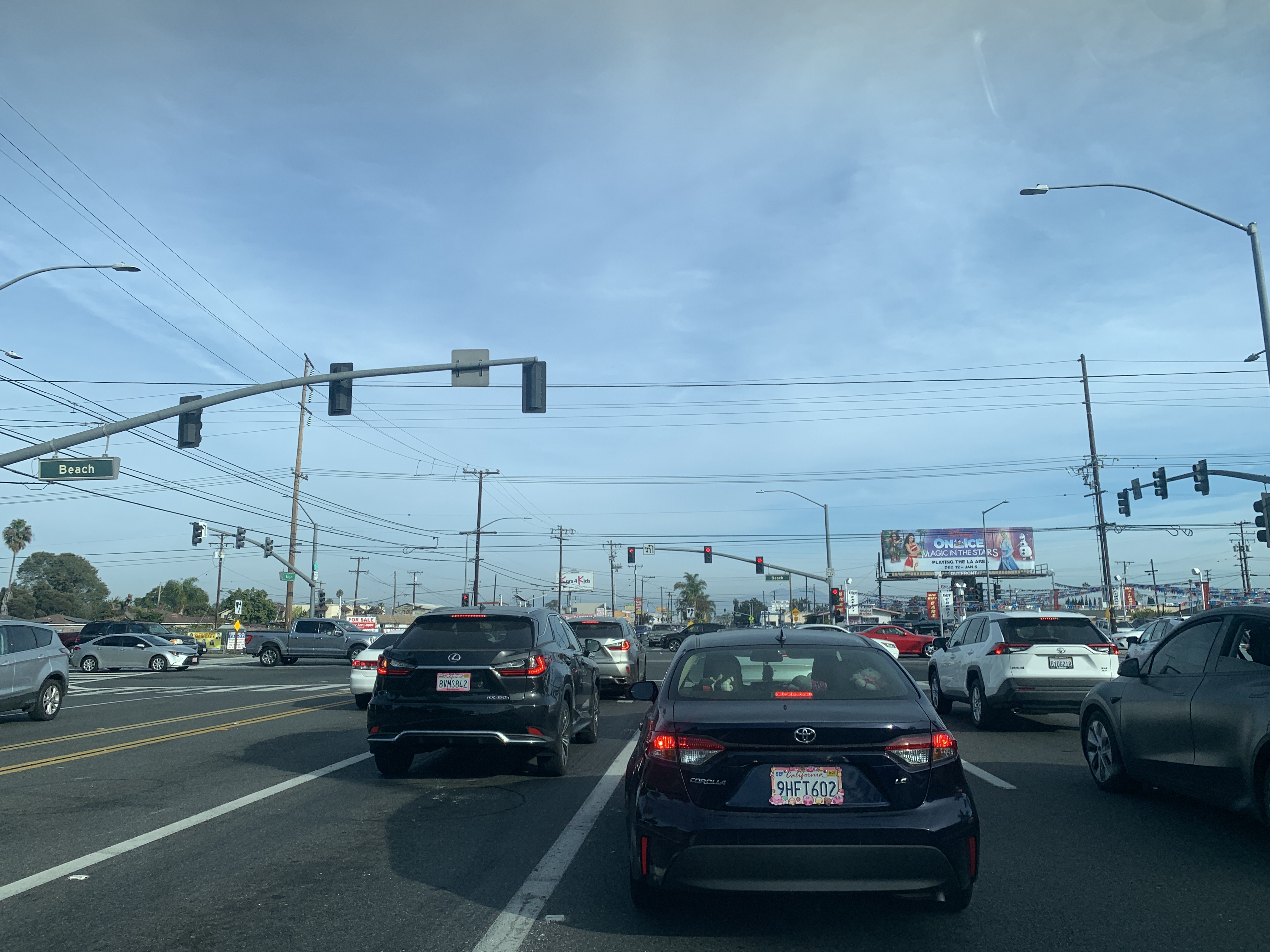
n°. 5: Utility lines disrupt and blemish the cityscape (Bolsa Avenue, Westminster, California)
|
|

n°. 6: The cityscape is much cleaner and prettier without utility lines (Westminster Boulevard, Westminster, California)
|
|
Also, wooden utility poles… These poles are why Westminster’s sidewalks don’t have tree separation. I’ve just solved my own mystery. Trees can’t be planted near high voltage utility lines. It seems the city doesn’t want to put the above-ground utilities that plague the city and its skyscape underground, most likely because the city coffers are running dry—it’s political.
|
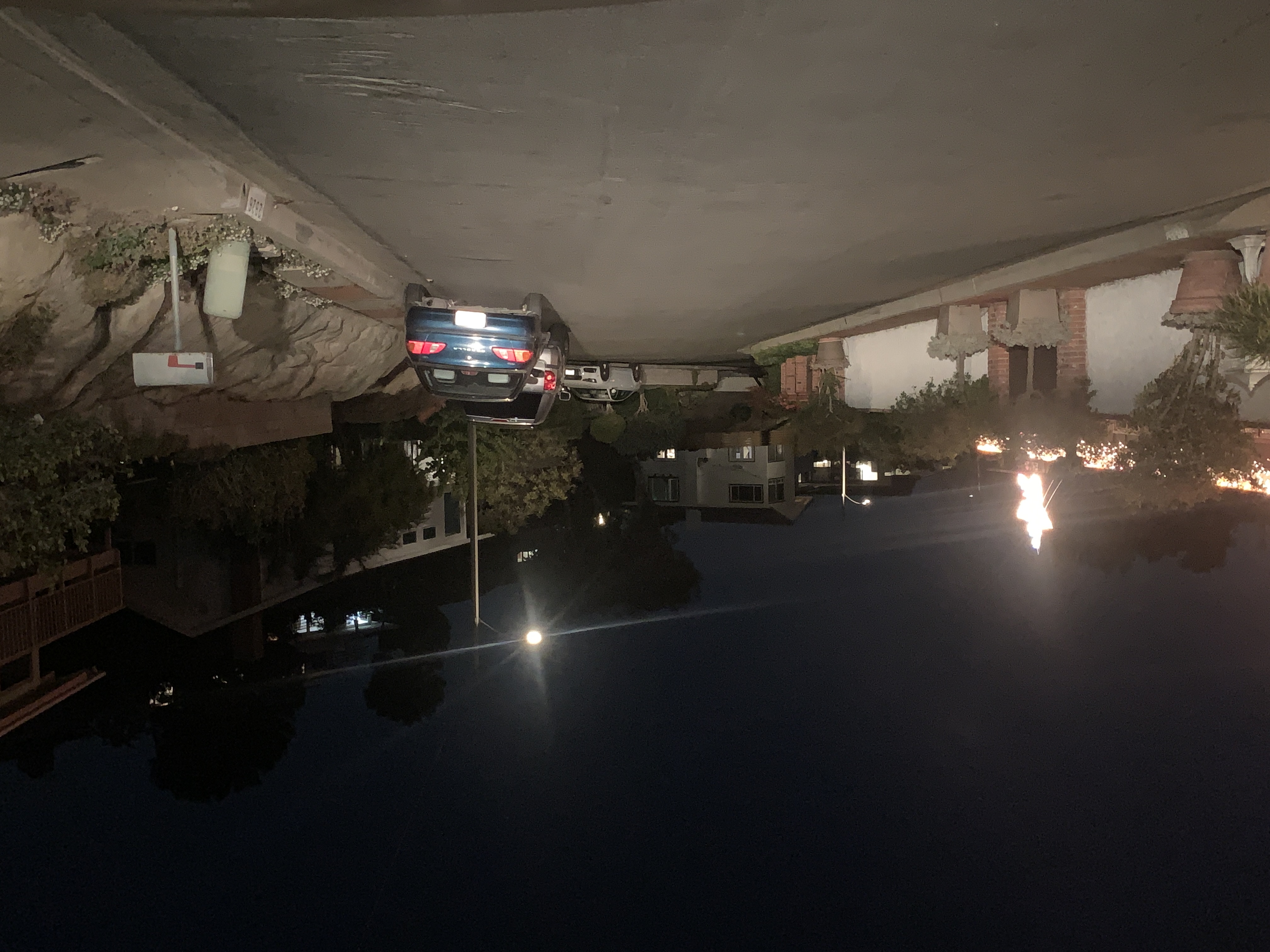
n°. 7: Narrow streets encourage slower driving (Dorn Court, Laguna Beach, California)
|
|
Sidewalk width, sidewalk protection, driver behaviour, higher penalties, and yellow paint have all been discussed so far. Although, it seems the topic of driver behaviour can be expanded. Goldenwest Street is like any arterial street in Orange County, although it can be put on the lower end of the attractiveness spectrum. As described before it’s six lanes wide, has no bicycle and minimum sidewalk infrastructure. Utility poles plague the atmosphere of the street, and it doesn’t really fit within the school setting. An arterial street, by the way, is only one level below the highway on the road hierarchy. Near a school… Near incredibly valuable students…
|
|
To many drivers, Goldenwest Street is a through street. This perception can be easily—although rather costly—changed by doing a simple road diet, from six lanes to four lanes! Removing the two outermost lanes will yield space for raised bike paths and sidewalk separation. Magic, isn’t it? The narrower vehicular space also serves as psychological effect on drivers. It’s less forgiving, so drivers will naturally slow down to ensure they don’t cause a crash by drifting out of their lane. It just feels safer to drive slower on a narrower street, unless you’re a rallyist. Sidewalk separation (trees!) enhances this effect.
|
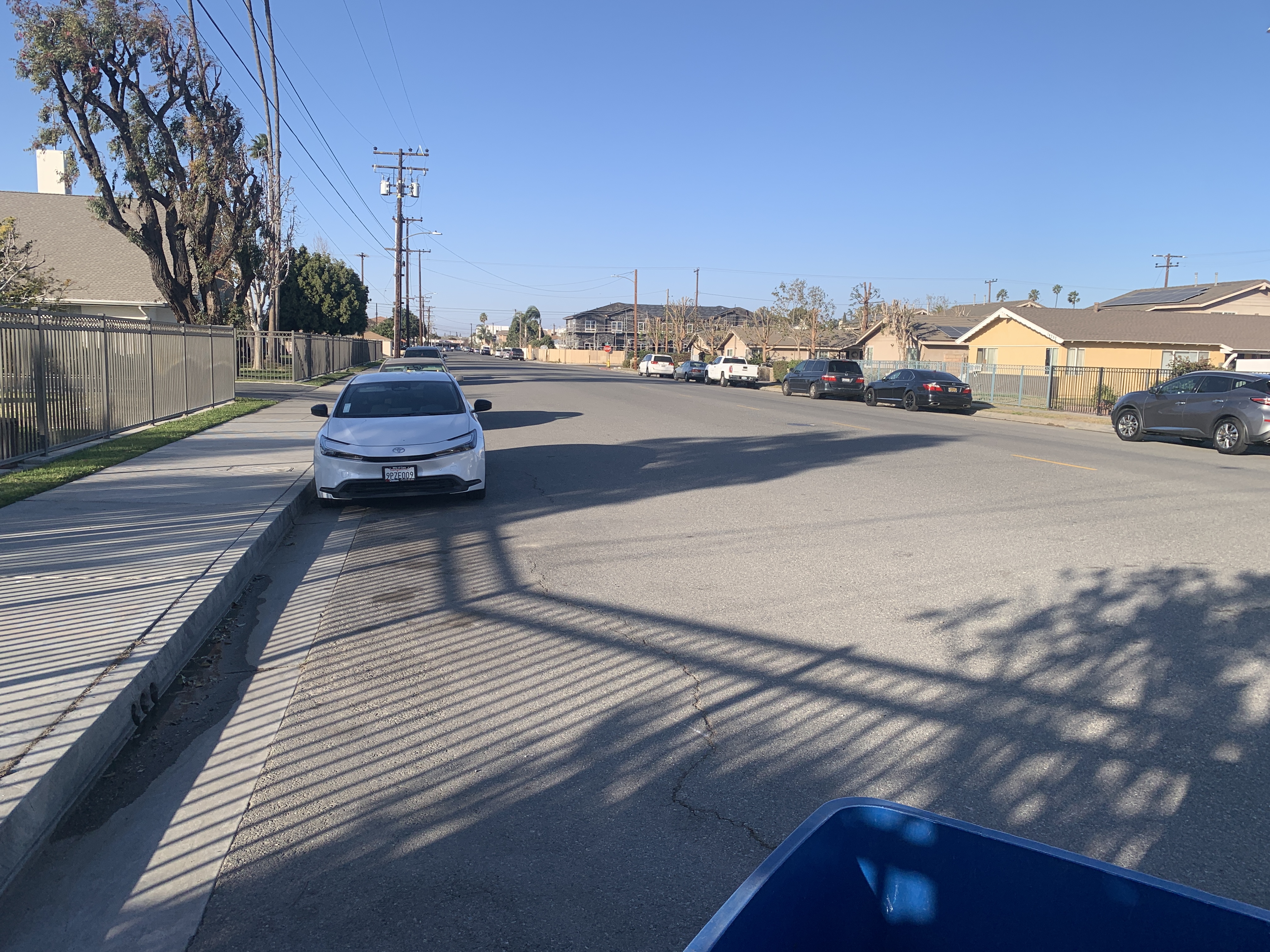
n°. 8: Streets are unnecessarily wide in the neighbourhood east of Westminster High School (Locust Street, Westminster, California)
|
|
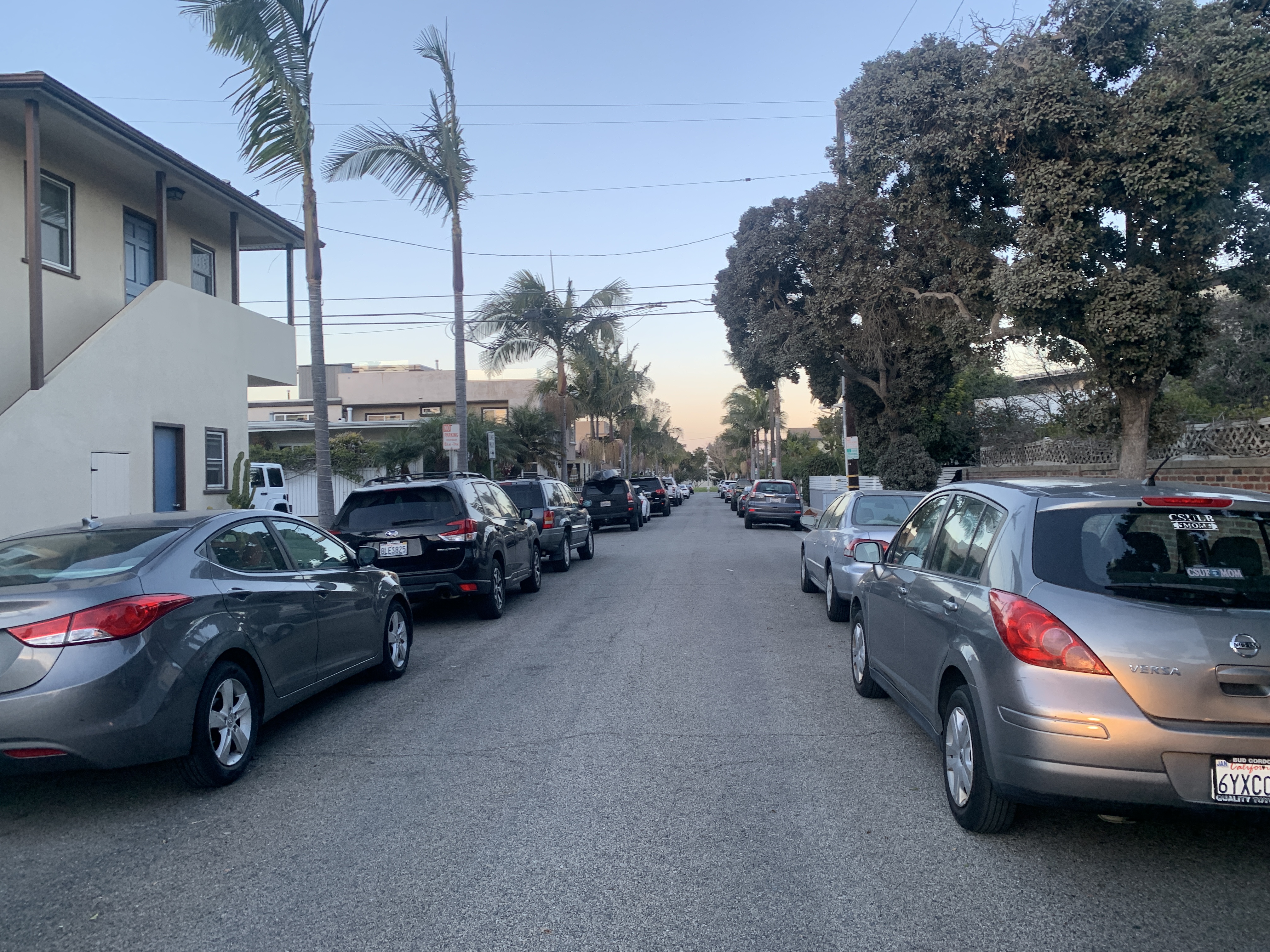
n°. 9: Narrow one-way street with parking on both sides (Dolphin Avenue, Seal Beach, California)
|
|
Let’s talk about access management. At the southwest corner of the intersection of Westminster and Goldenwest, there are four driveway aprons all next to each other within the span of 175 feet (53,2 metres). Not only is this terrible for disabled persons accessibility as the sidewalk slope changes due to the lack of separation, it’s also a lot of potential for conflict. High volumes of traffic constantly enter and exit the ARCO fuel station and the adjacent business plaza, whilst student are constantly crossing these aprons to get to the Chipotle or McDonald’s across the intersection. Why does the ARCO even need three driveways, all on one side? This is a recipe for many potential conflicts and accidents. The ARCO should instead be accessed from the business plaza, which has only one access point on Westminster Boulevard, three on Rondeau Street (spaced apart far enough), and two on Goldenwest Street.
|
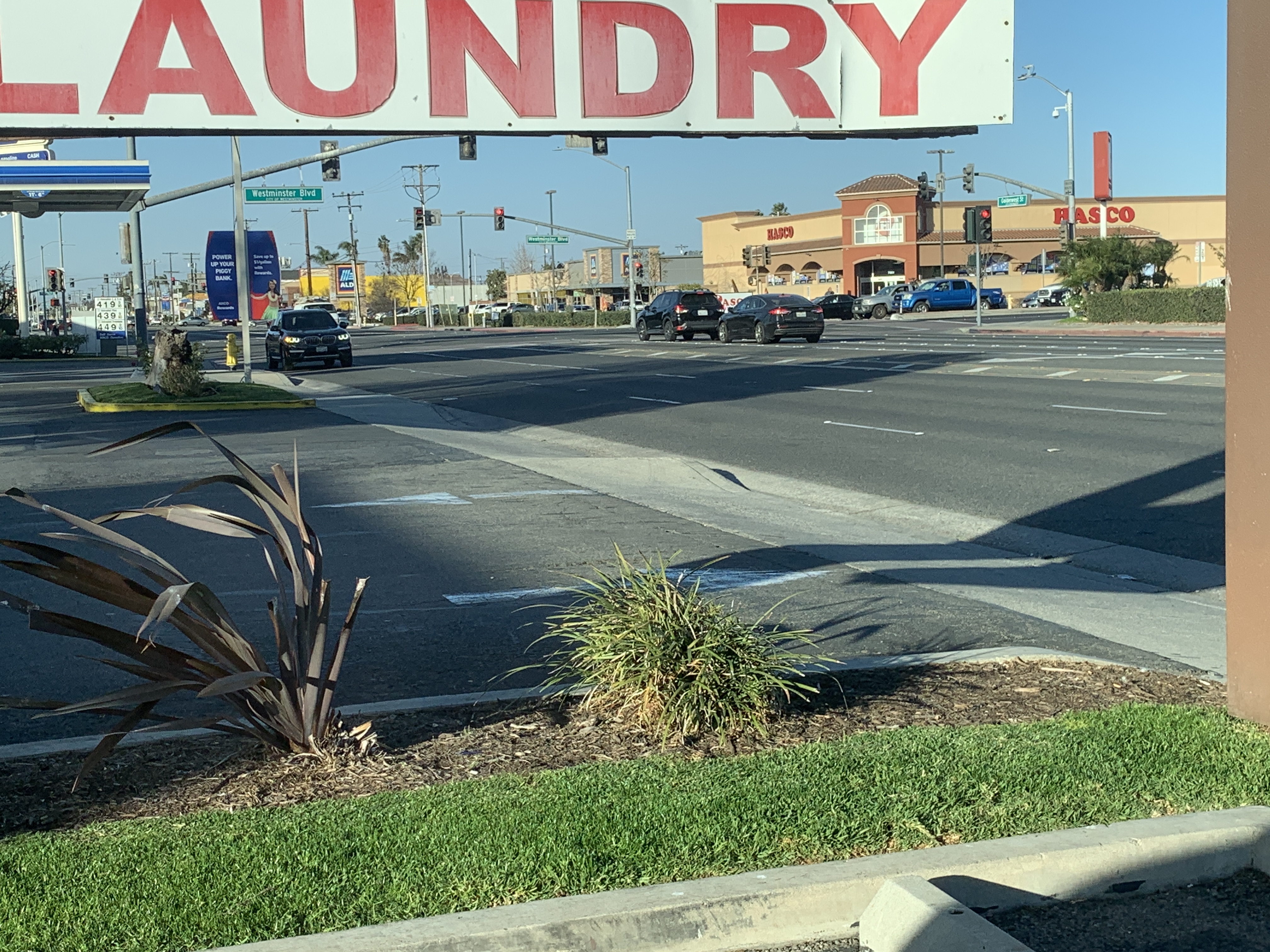
n°. 10: Four driveway aprons obstruct the sidewalk on Goldenwest Street (Westminster, California)
|
|

n°.11: Right turns on red banned by Meairs Elementary School (Garden Grove, California)
|
|
There are three issues (or solutions) left to discuss. The first is turning right on red. Conflicts are more likely to happen in school zones because students walk, as explained earlier, in massive waves. Turning right on red isn’t necessarily a recipe for disaster because right-turns are rather sharp, which require less speed. Pedestrians don’t often get killed by cars turning right on red, but injuries are not rare. And it’s even worse with more and more people driving SUVs and large trucks with their blunt bonnets that smash into the centre of mass of the human body–smaller cars allow pedestrians to crumple onto the bonnet. But that’s not the point. Banning right turns on red in school zones can eliminate student-vehicle conflicts. Add in leading pedestrian intervals, and turning right on green can be made even safer for students. Leading ped. intervals are the gaps between a green light and a walk signal. A student already crossing before a vehicle makes its turn has more visibility to the driver, who can then react in time.
|
|
The second issue is signage. This issue is relatively specific to Westminster, as the stop signs on Chestnut Street and Main Street (respectively intersecting Hazard Avenue and Hoover Street) can be hard to spot, especially at night. Naturally, this causes driver negligence. Normally, a bare stop sign wouldn’t be problematic, and responsiveness to the signs are strong. However, stop signs are not normally placed between two major streets in Westminster. Usually, there would be nothing or a traffic signal. Due to this discrepancy, the two stop signs are unexpected and something should be placed to notify drivers of the discrepancy. Flashing lights and “flashing stop signs” are very effective at doing this.
|
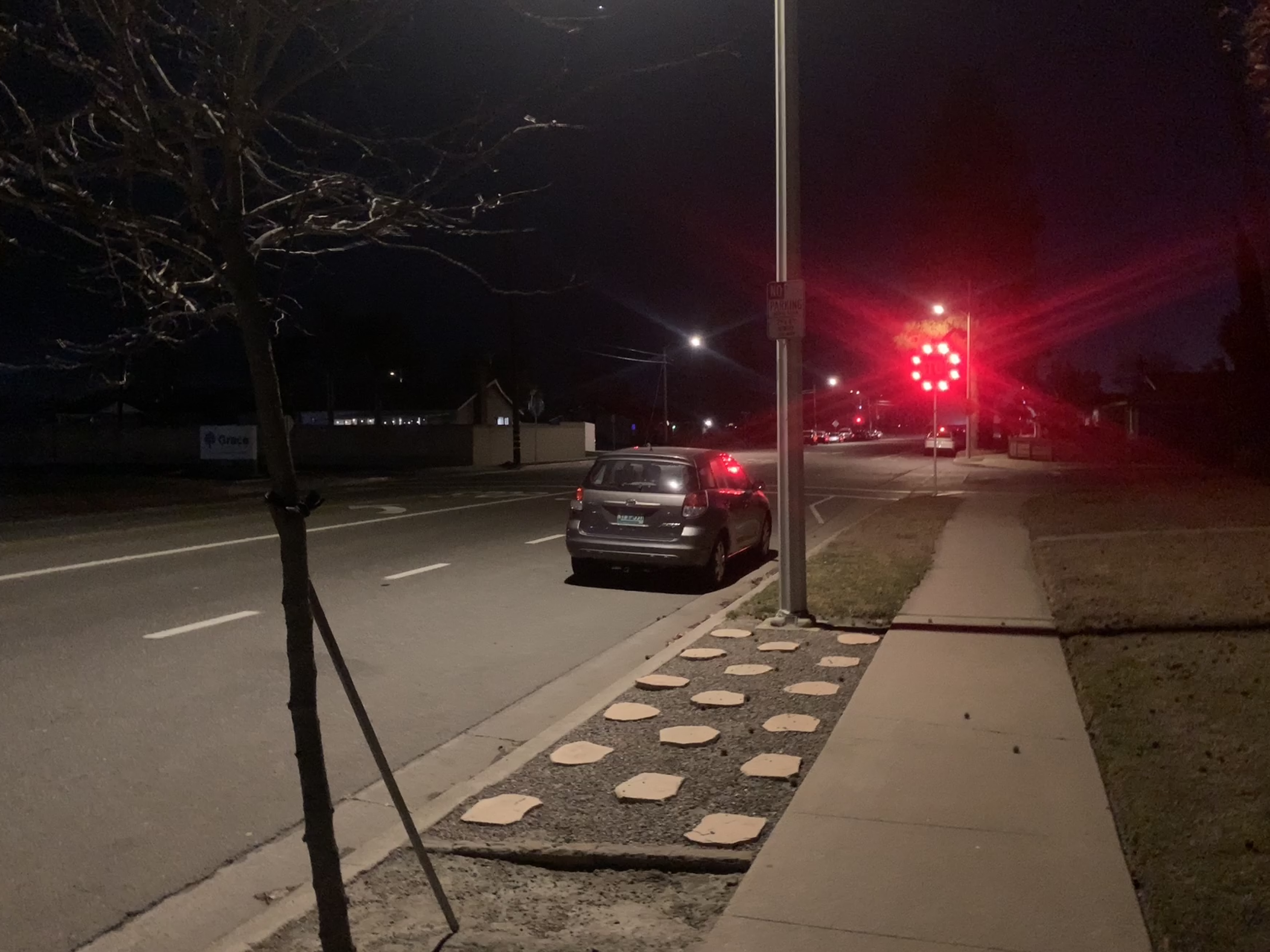
n°. 12: Flashing stop sign is very effective at capturing a driver's attention (McFadden Avenue, Huntington Beach, California)
|
|
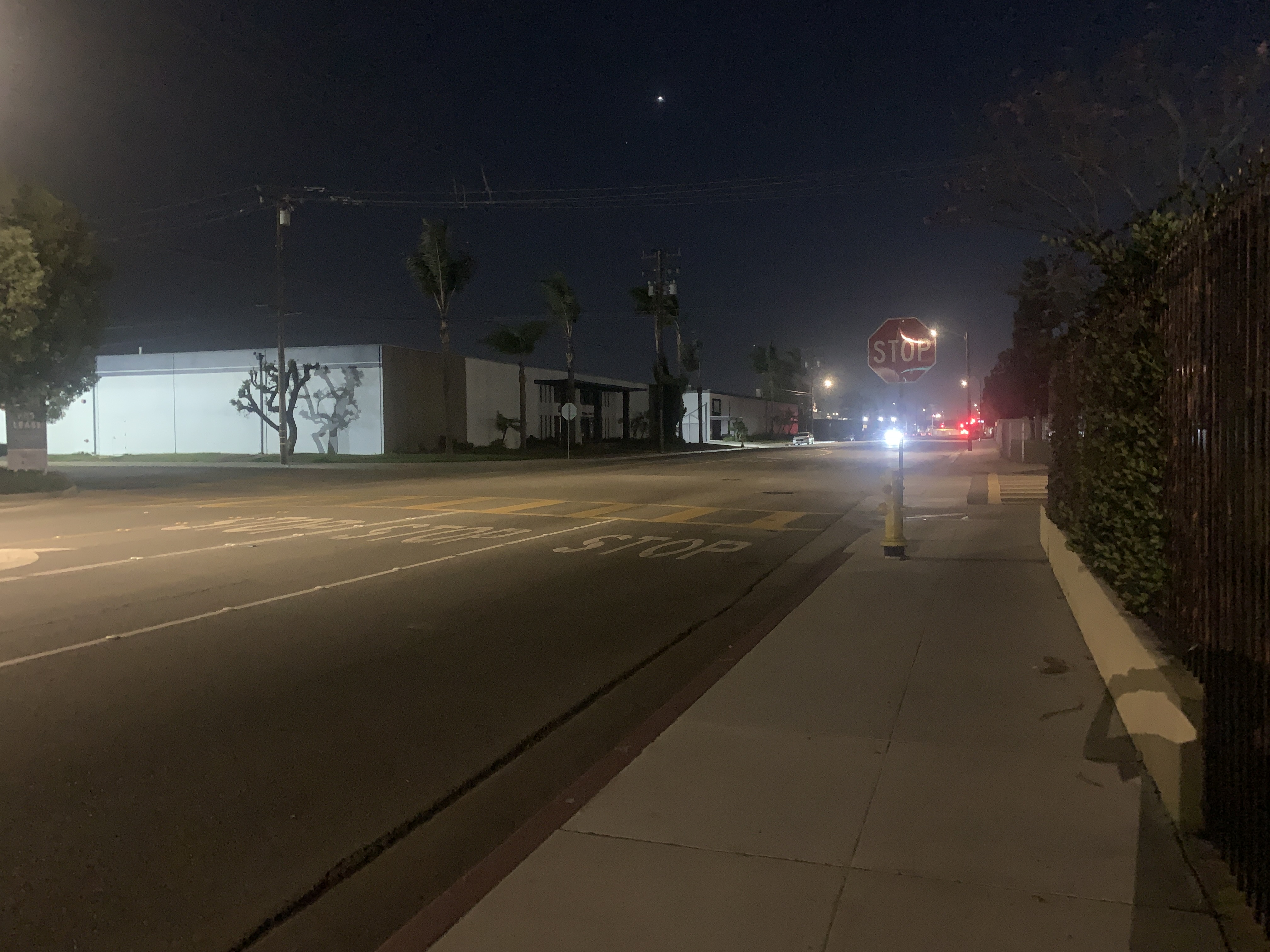
n°. 13: The bare stop sign at Hazard Avenue is hardly visible (Westminster, California)
|
|
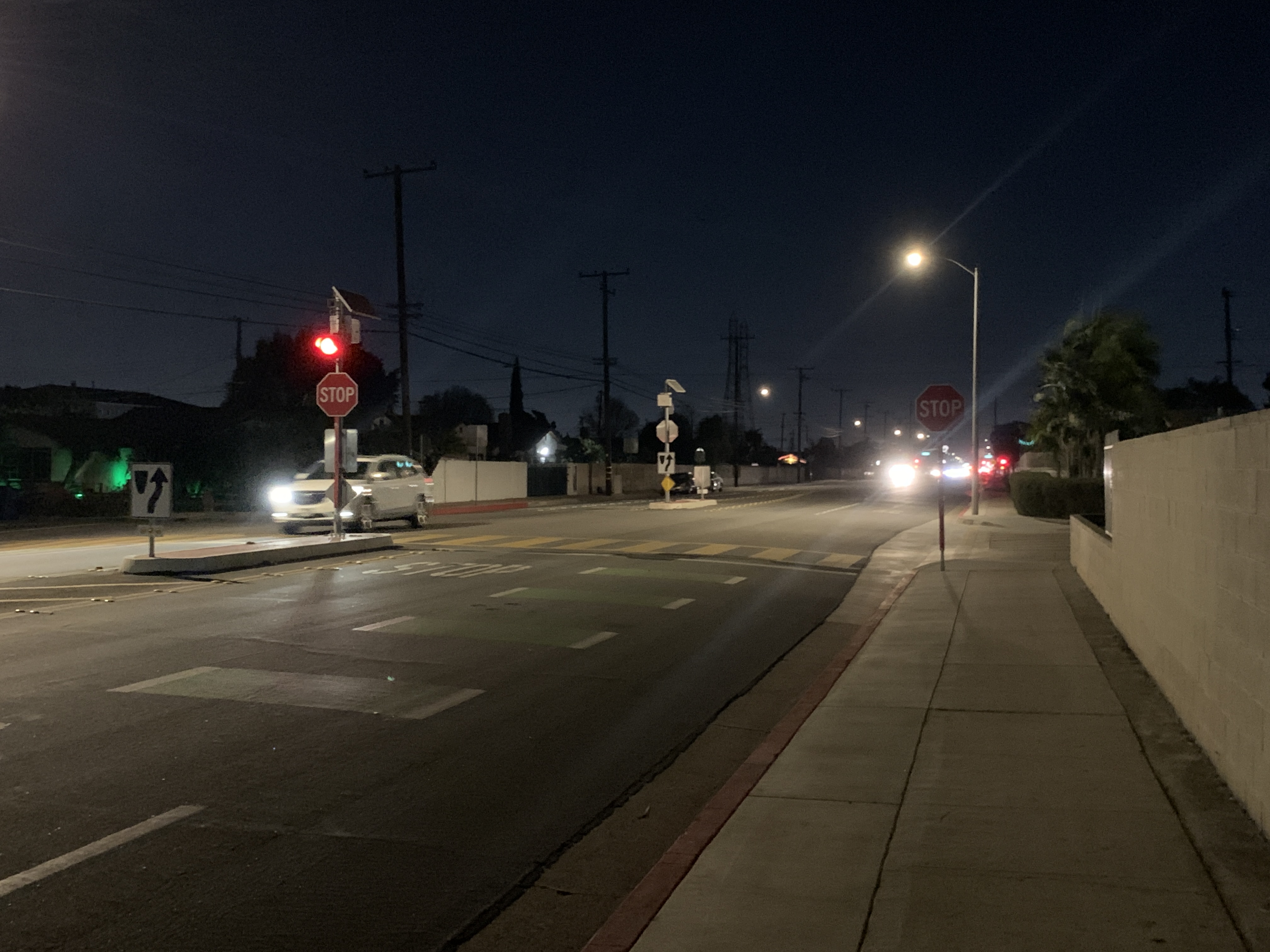
n°. 14: The flashing red beacon alerts drivers to stop at the intersection. (Trask Avenue, Westminster, California)
|
|
Dedicated turn lanes are the final concern. On 6th January 2023, a three-year-old toddler was killed by a driver making an unprotected left turn on a green light from 21st Street whilst legally crossing Goldenwest Street. This intersection, like many intersections of this kind in Westminster and the school zone, does not have turn lanes and turn arrows. Whilst this accident could have been prevented by driver cautiousness, humans cannot be depended upon to be perfect all the time. Especially in school zones and business districts where pedestrian traffic is very high, turn arrows should be mandated to separate the crossings of turning traffic and pedestrian traffic. Turn lanes are required for these turn arrows to exist, and it’s not as if there isn’t enough space for them. Dedicated right turn lanes will also help reduce pedestrian-involved accidents, as well as rear-end crashes (which can end up involving any pedestrians that are using the crosswalk). Using these separations, stopped turning traffic can be kept away from constantly moving through traffic. This can prevent drivers from slamming on the brakes for the stopped traffic to avoid a rear-end accident, or one would just happen anyways because humans aren’t perfect.
|
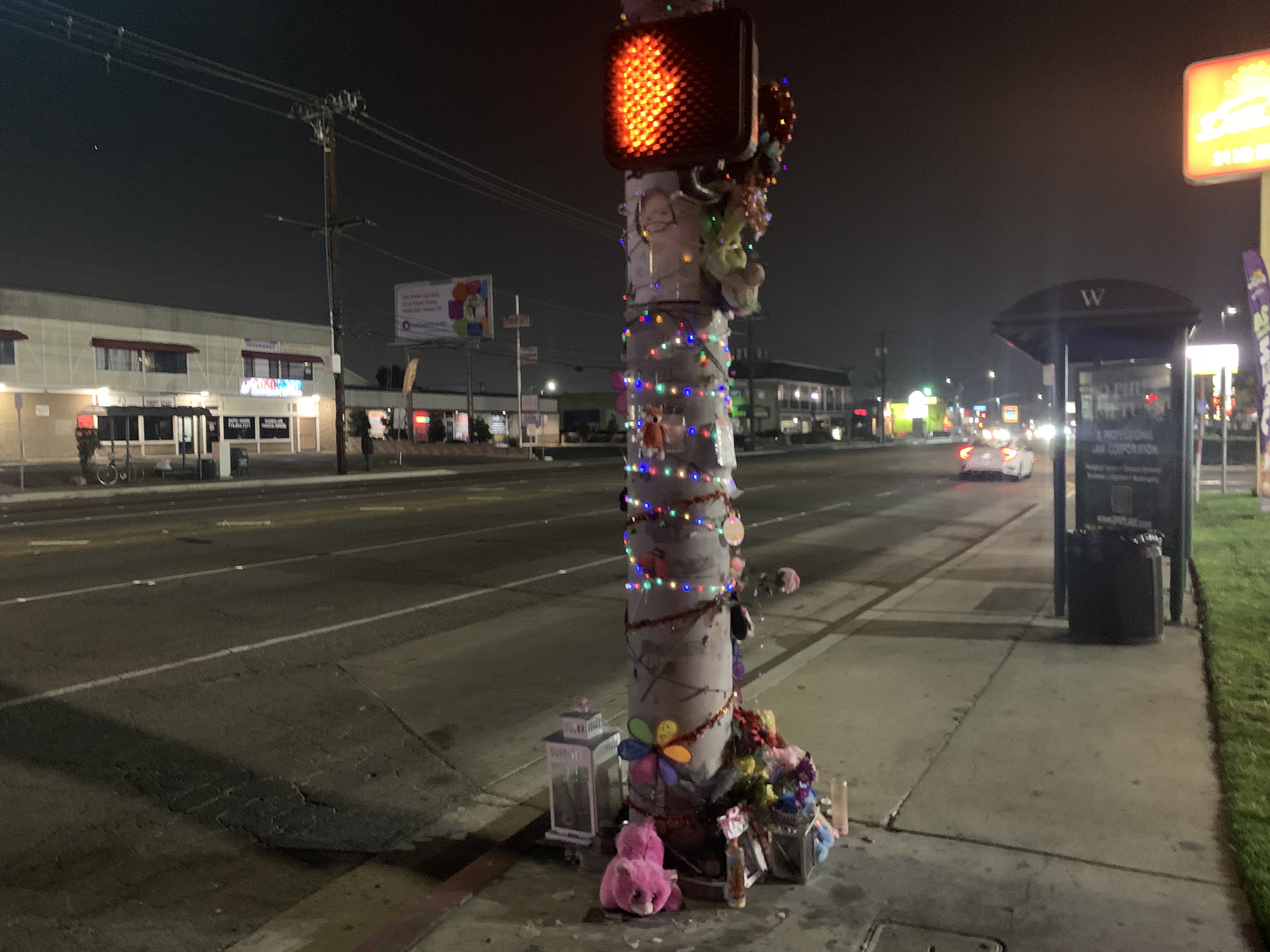
n°. 15: A roadside memorial for "Baby Nana" at the intersection of Goldenwest Street and 21st Street (Westminster, California)
|
|
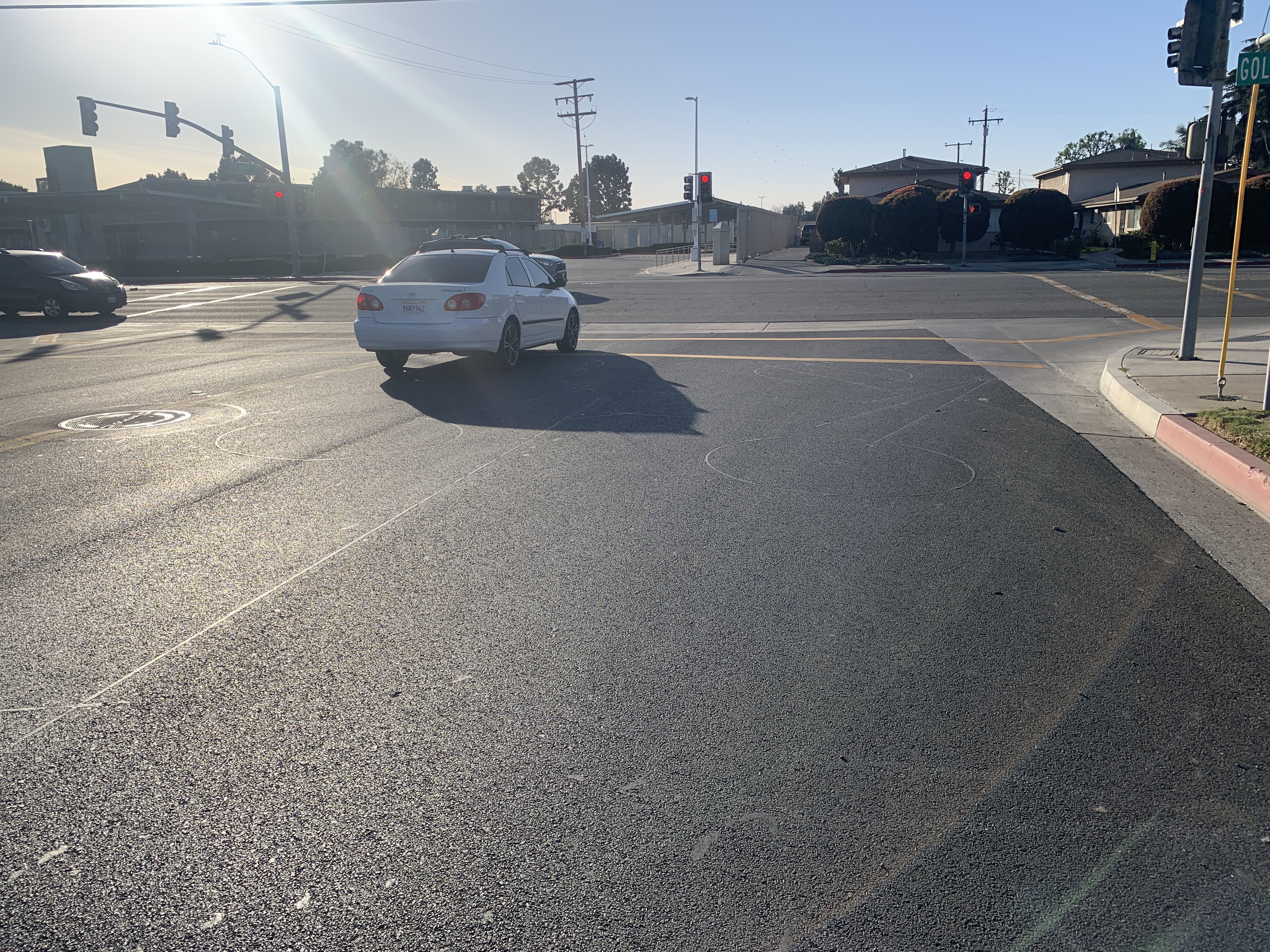
n°. 16: No turn lanes are present at the intersection connecting Westminster High School to Goldenwest Street (Westminster, California)
|
|
Also, the picture on the right on the first page of this document was of the school zone for Westminster High School. You were probably wrong. Getting tired of reading “Westminster” yet?
|
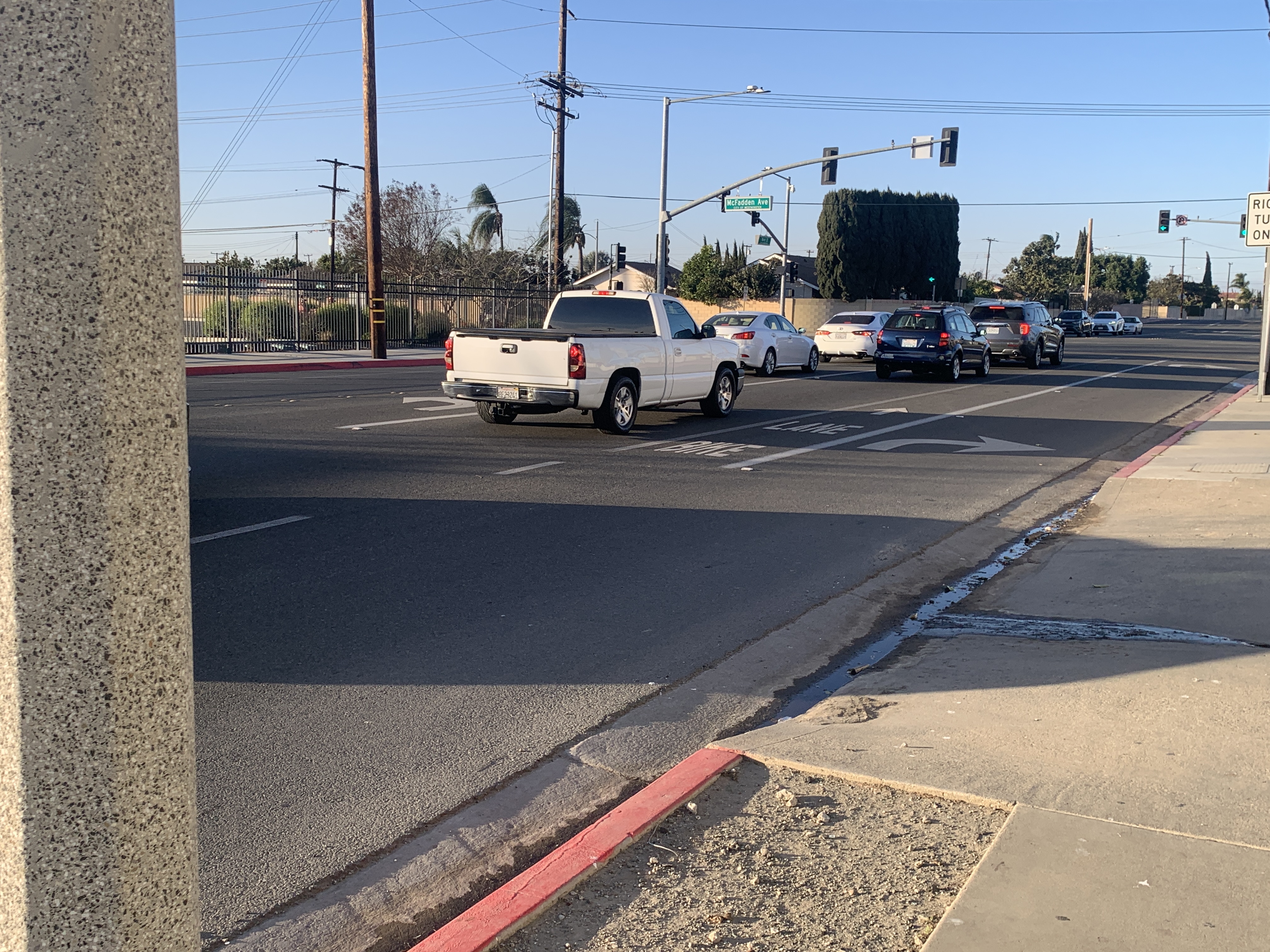
n°. 17: Turn lanes help to separate standstill traffic from through traffc (McFadden Avenue, Westminster, California)
|

